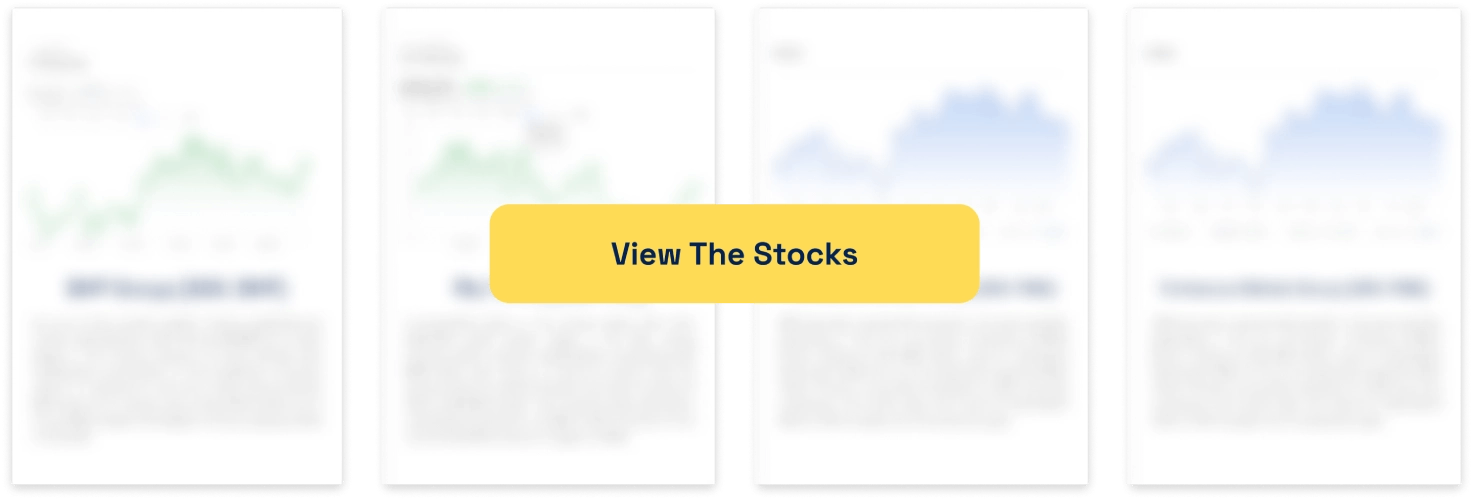Is NAB (ASX: NAB) the best Big 4 bank or perhaps just ‘The Best of the Rest’? This is why we aren’t so sure
![]() Nick Sundich, June 16, 2025
Nick Sundich, June 16, 2025
NAB (ASX: NAB) is one of Australia’s so-called “Big Four” Banks and at $120bn is the second largest by market capitalisation – only trailing CBA (ASX: CBA). This company provides banking services, particularly deposit accounts and loans to customers in Australia and overseas.
How does it stand out? Is it just ‘The Best of the Rest’?
Well, compared to its peers it has a larger exposure to the business lending market and has positive trading momentum, turning itself around following the Banking and Financial Services Royal Commission under the tenure of then CEO Ross McEwan. Now, Andrew Irvine is CEO. So what now for the bank?
The COVID lending boom rolled on for NAB and it won the mortgage wars
Obviously during the pandemic NAB made hay where the sun shone, building its loan book thanks to low interest rates. It made back to back $6bn+ profits in FY21 and FY22 (NAB uses October 1-September 30 as its financial year), making a 10.3% and 11.7% ROE respectively. After paying $1.68 per share in FY19 and dropping to $0.60 per share in FY20 as the pandemic hit, it paid 67c per share in FY21 and 78c per share in FY22.
The bank’s earnings were lifted by higher business and housing lending volumes, increased fees and commissions as well as increased risk management income in its Markets and Treasury division. NAB’s mortgage book rose by $8bn and its credit card operations doubled after buying Citi’s retail banking arm.
However, it was a case of high-volume but low-margin business. The bank’s Net Interest Margin (NIM) fell to 1.64%, following roughly two years of record low interest rates. All because of the ‘mortgage wars’. Customers who were rolling off their fixed interest rates sought better deals. Banks have had to offer slightly lower interest rates and other sweeteners too that eat into profitability – particularly cash back offers.
And if customers use a broker (which is roughly half of them), banks have to pay commissions and that hits margins further. Other things that didn’t help NAB’s cause were the US regional banking crisis as well as Westpac and ANZ putting past issues impacting their share prices behind them.
Nonetheless, NAB made a $7.4bn profit in FY23, paying 84cps as a dividend.
FY24 was difficult
NAB followed its FY23 result up with a $6.96bn profit (down 6.1%) and it paid 85cps in FY24. FY24 was a more difficult year for the bank. In February of 2024, the bank formally announced Ross McEwan would be succeeded by Andrew Irvine, then Business and Private Banking director.
His hiring indicated that the bank wanted to stand out to investors due to business banking. This is because NAB has a good business banking market share (claiming to bank more than 1 in 4 businesses). But also because it sure wouldn’t through home loans that the bank is losing money on (yes it admitted that broker-induced loans were sold at a loss). Just look at the fact that earnings from home loans fell 30% in 1H24 but earnings from business and private banking fell just 2%. And 70% of cash earnings come from the latter.
While shares rose 60% from mid-2023 to early 2025, they took a dive between February and April 2025, not because of Trump’s tariffs, but not ideal results out of the business banking division in its February update.
NAB’s 1H25 results in May were somewhat more favourable (with 6% growth in lending to small business) so shares have recovered, even though company not shied away from competition. There have also been concern about mortgage arrears, at 1.39% as of 1H25 (roughly $10bn), the highest since the pandemic and up from 1.13% in 1H24.
The reality is that the other Big 4 (and other banks) want a slice of the pie, particularly amongst smaller businesses. And they are growing, Westpac for instance grew its small business lending by 14%.
Even if NAB had no threats to its position, business conditions due to Trump’s tariffs (and also in Victoria) haven’t helped matters. Irvine has explicitly said,’ On every measure in our business, Victoria does a little bit worse’. Still, NAB thinks it is better to make more money from less people than less money from more people and said that was why NAB was growing slower than Westpac.
Ideas for the future
NAB is looking at AI. In particular it want to use AI to replicate a branch manager who knows a customer’s needs and preferences – both the ones customers know and ones customers don’t know but have implicitly revealed through their data.
The bank isn’t going all in on AI to improve customer service. Not in the sense it isn’t using it at all, but another pillar is weekend operations. It has been trialling extended Saturday hours and retail banking boss Ana Marinkovic has even mulled Sunday branch openings.
NAB also wants to convert its business customers to home loan customers too, because they would be unlikely to use a broker. On the subject of home loans, it wants to generate more loans of its own, and progress is being made. 40% of loans through bank’s own channels, up from 35% a year ago.
It has also officially got out of life insurance, selling the rest of MLC to Nippon Life for $500m, having sold 80% in 2016.
What next?
To make a long story short, the days of Ross McEwan where the bank was clearly the best of the rest with NAB recording growth and Westpac and ANZ stagnating are gone. NAB is facing legitimate competition on its own turf. The competition is not insurmountable, but it will need to be surmounted.
There will always be risks investing in the banks with regulatory breaches and even maybe new regulations – the proposed industry levy to support rural services is one to be aware of.
The median share price of $33.53 which is a discount to the $39.23 intraday price on June 12. Even then, the highest estimate is $39.14 which is still a discount, and the lowest is $28.01.
Consensus estimates for the full FY25 suggest $20.645bn revenue, down from $20.646bn revenue in FY24, along with $2.19 EPS, down from $2.23 the year before. Then in FY26, $21.1bn revenue and $2.24 EPS, so evidently FY26 will be better.
Its P/E is 17.1x and its PEG is over 9x, so whilst the former may suggest the bank is undervalued, the latter would suggest is is highly overvalued. Its P/V is 1.9x, the second most after CBA.
So is NAB the best ASX bank stock?
Overall, no. Certainly CBA has that crown right now, and even though NAB is in some respects ‘the best of the rest’, it is facing competition in business banking which is its traditional turf.
What are the Best ASX stocks to invest in right now?
Check our buy/sell tips:
Frequently Asked Questions about NAB
- What is NAB?
NAB (ASX: NAB) is one of Australia’s Big Four Banks.
- Does NAB pay a dividend?
Yes, NAB pays a dividend. It paid $0.85 per share in 1H25, representing a yield of over 4%.
- Is NAB Australian owned?
It has Australian shareholders, but some foreign shareholders too. Ultimately, it is difficult to deduce because a significant portion of shareholders own shares through custodianship agreements and their identities are hidden to the general public.
- Is NAB an ethical company?
NAB has placed an increasing focus on ESG in recent years, but whether investors think NAB is an ethical company will depend on how the company is performing on metrics most important to individual investors. On the climate change front, it is targeting a Net Zero lending portfolio by 2050, is looking to source 100% of its own energy from renewable sources by 2025 and has joined the UN-convened Net Zero Banking Alliance. It has also lent more than any other Australian bank to renewable energy projects since 2003.
- Who is the CEO of NAB?
Andrew Irvine, who has been since February 2024?
Blog Categories
Get Our Top 5 ASX Stocks for FY26
Recent Posts
Archer Materials Cracks Quantum Readout Challenge as Stock Surges 12%
Archer Materials Just Solved One of Quantum Computing’s Hardest Problems Archer Materials (ASX: AXE) jumped 12% today after unveiling two…
NVIDIA’s Blackwell Chips Ignite Record Demand in Q3
NVIDIA’s Blackwell Surge Tech investors and growth-focused funds will be breathing a sigh of relief after NVIDIA (NASDAQ: NVDA) delivered…
REA Group (ASX:REA): Here’s why it succeeded over Domain Group at home, but hasn’t done that well abroad
REA Group (ASX:REA) is best known in Australia as the owner of realestate.com.au. For so long, the company (which is…



